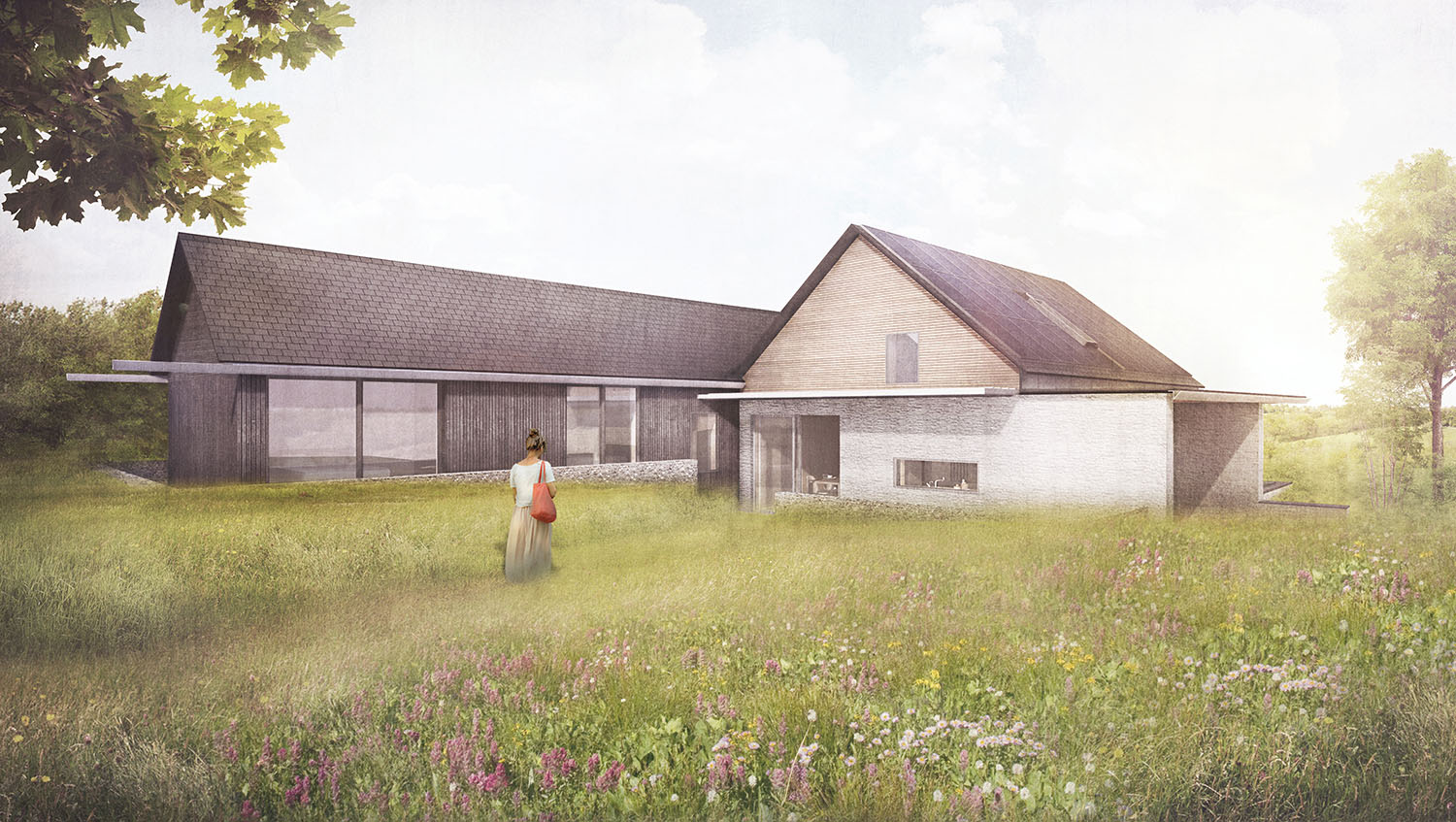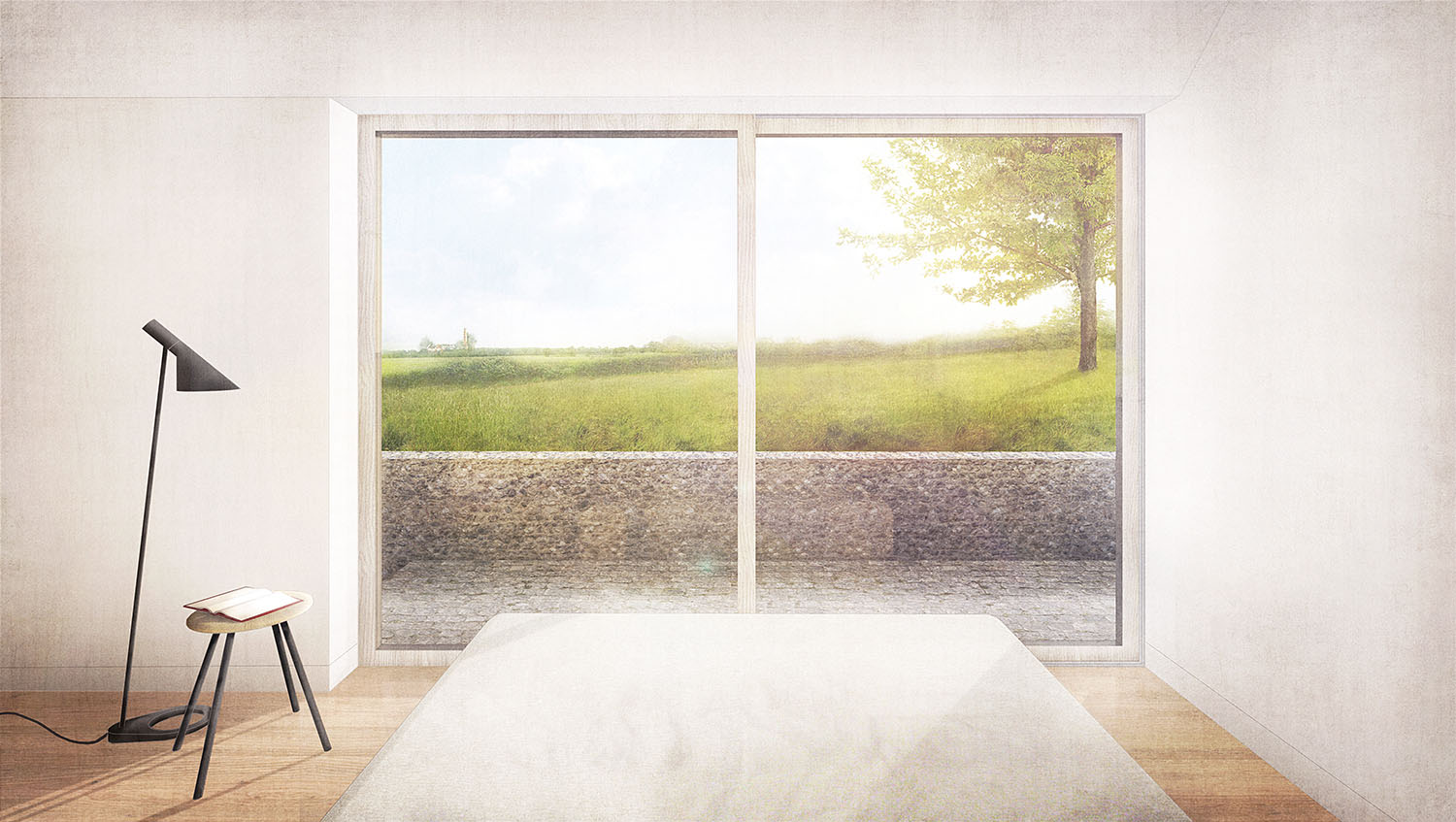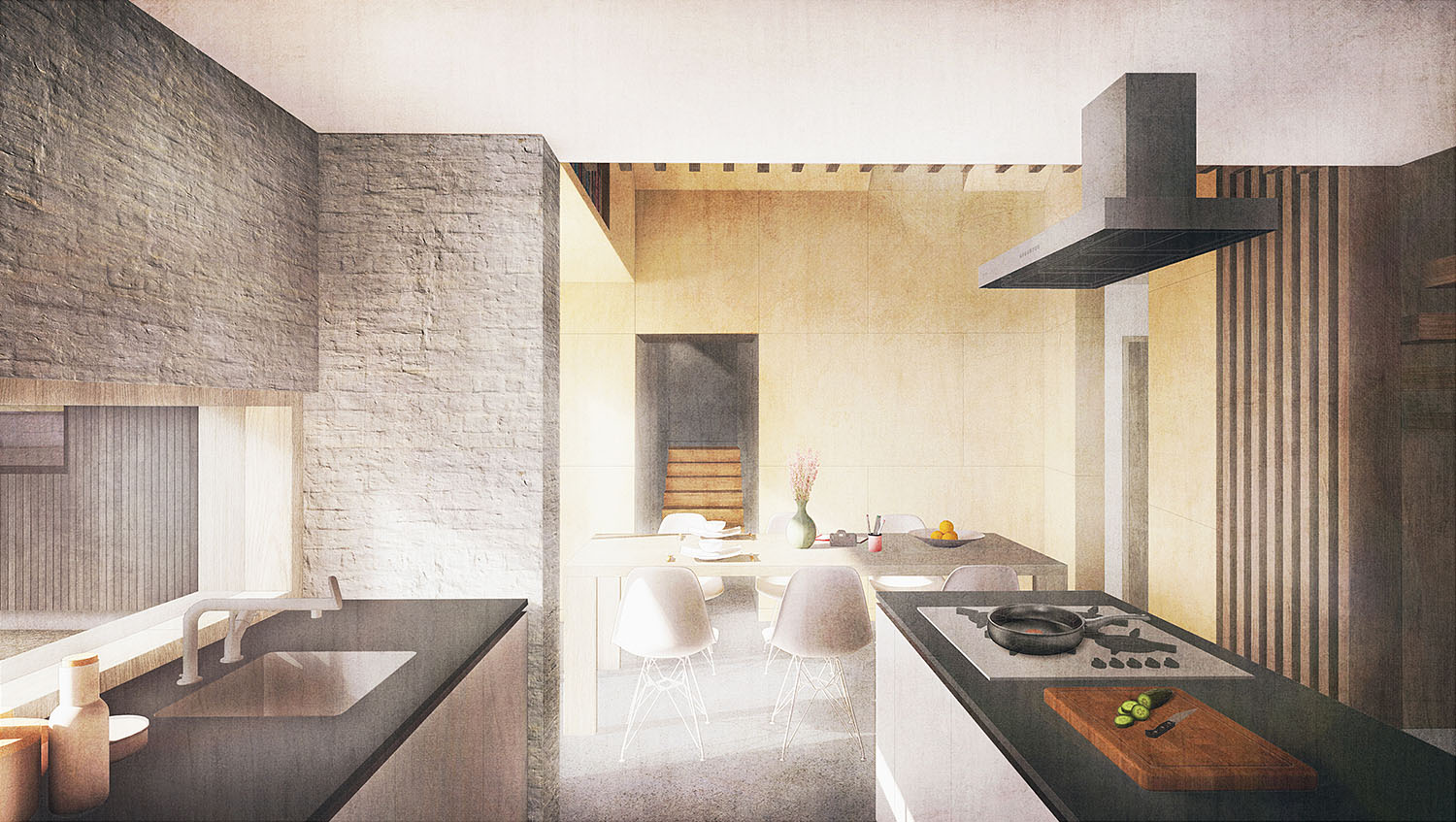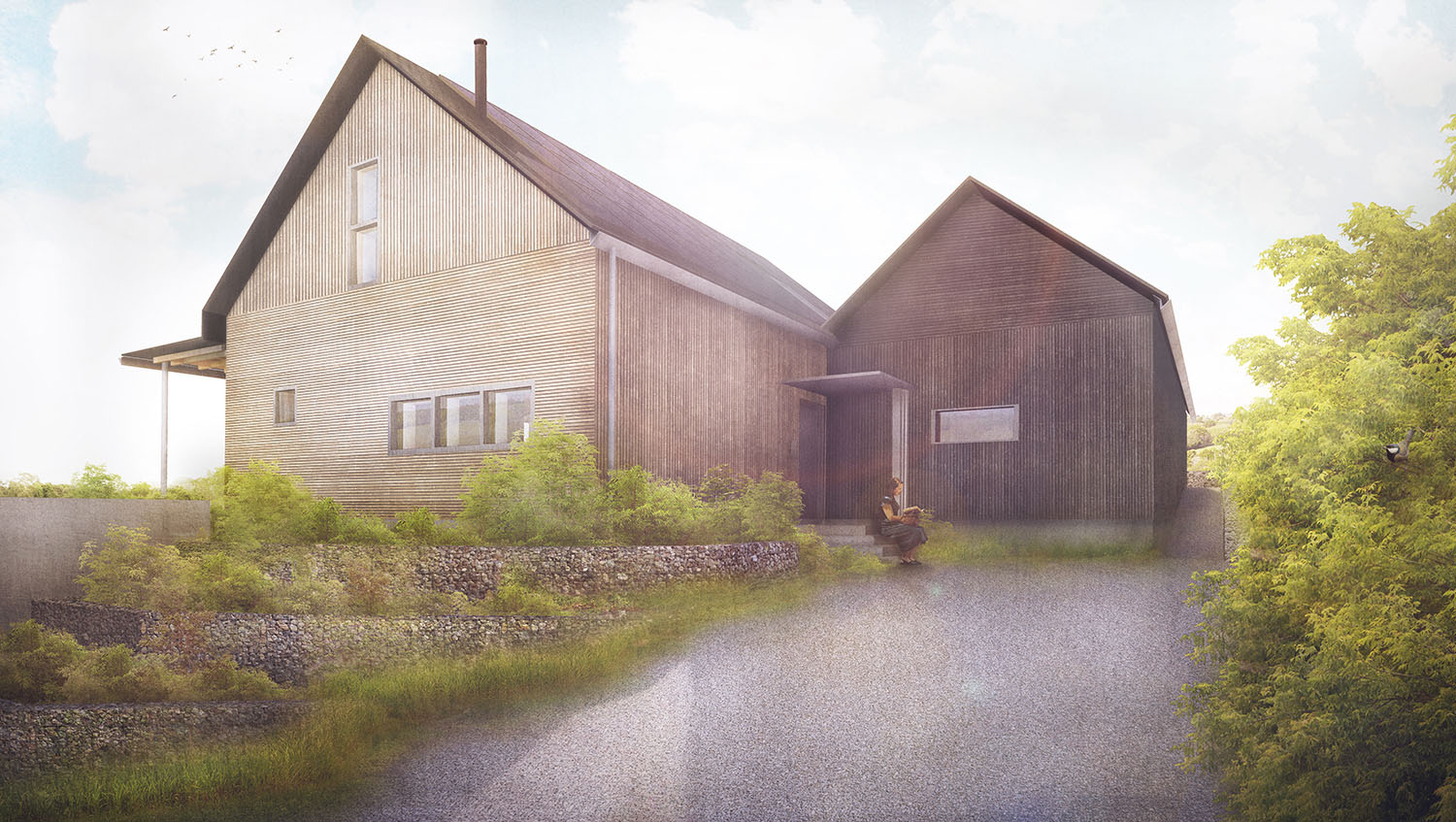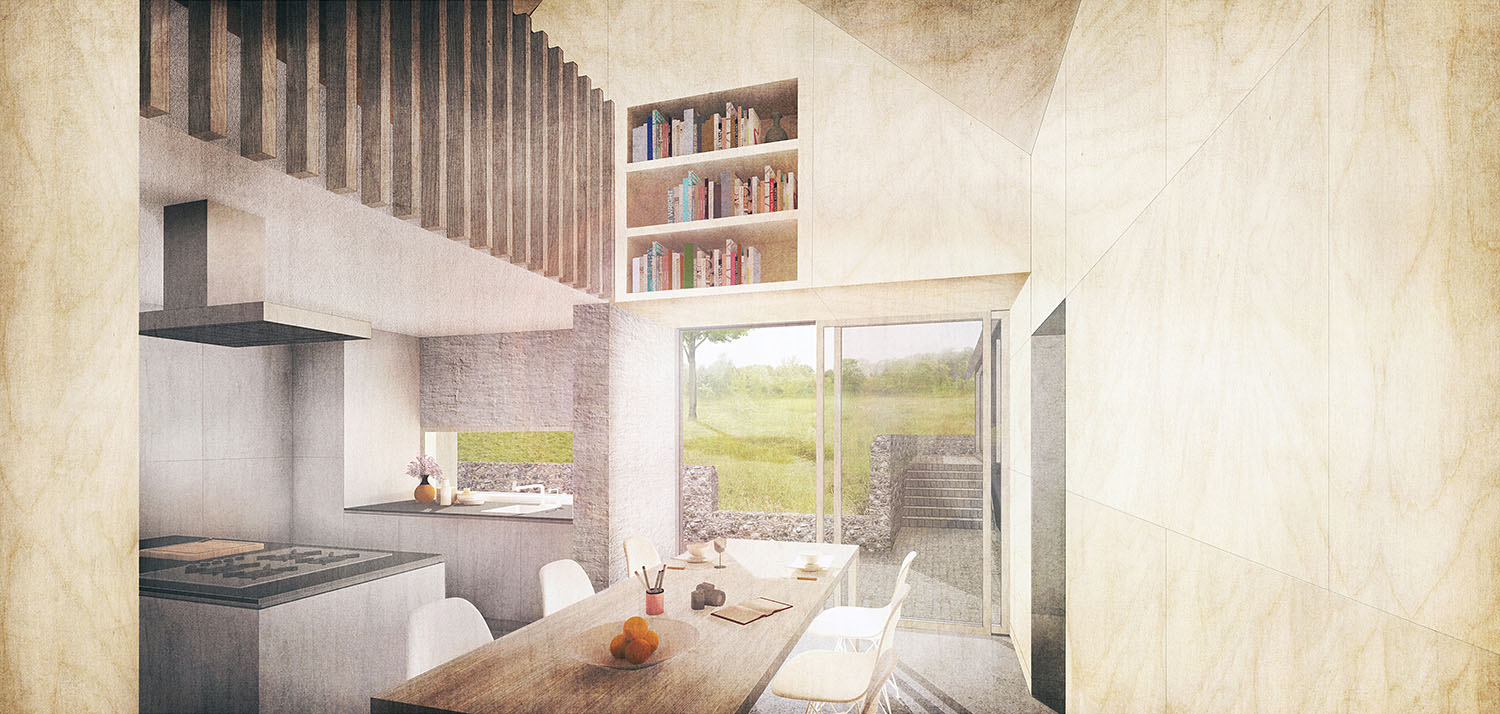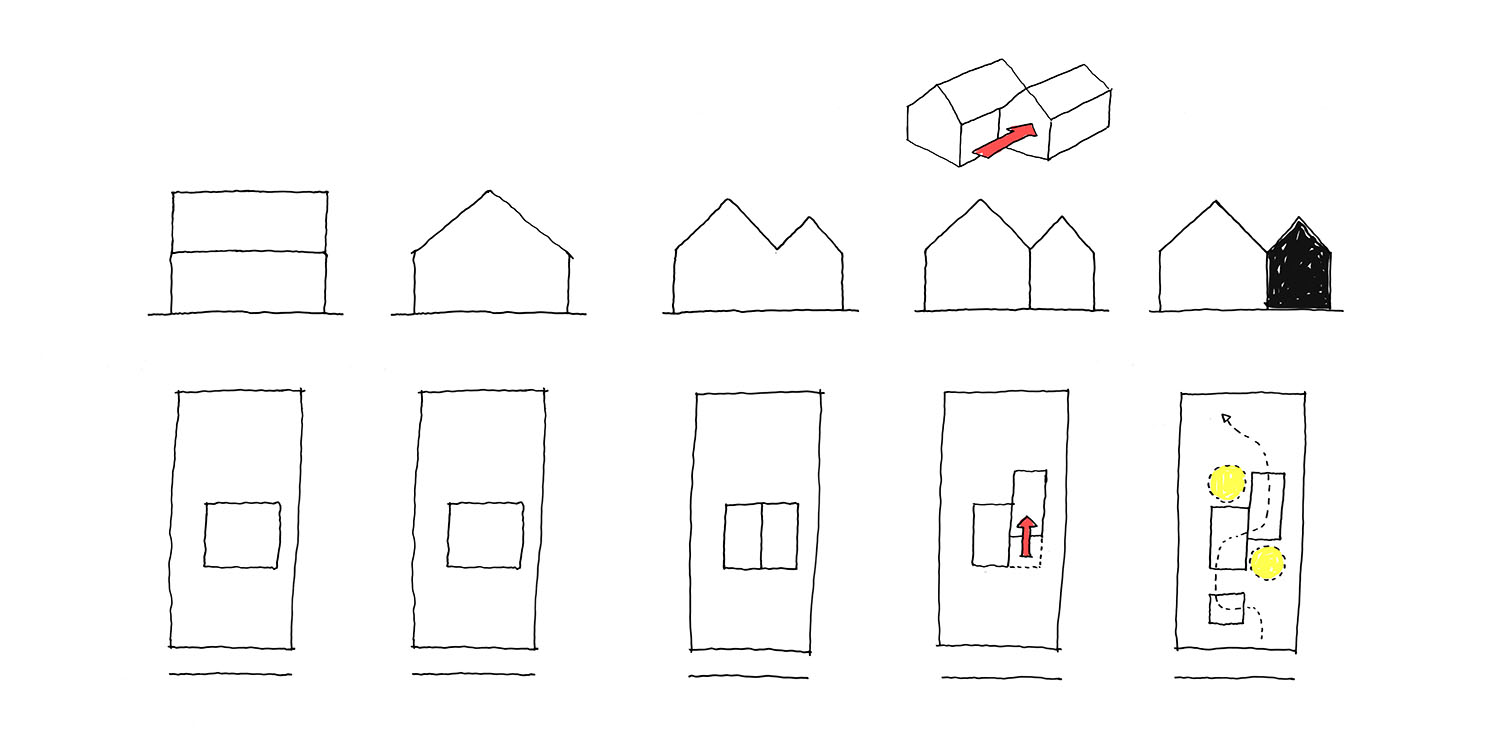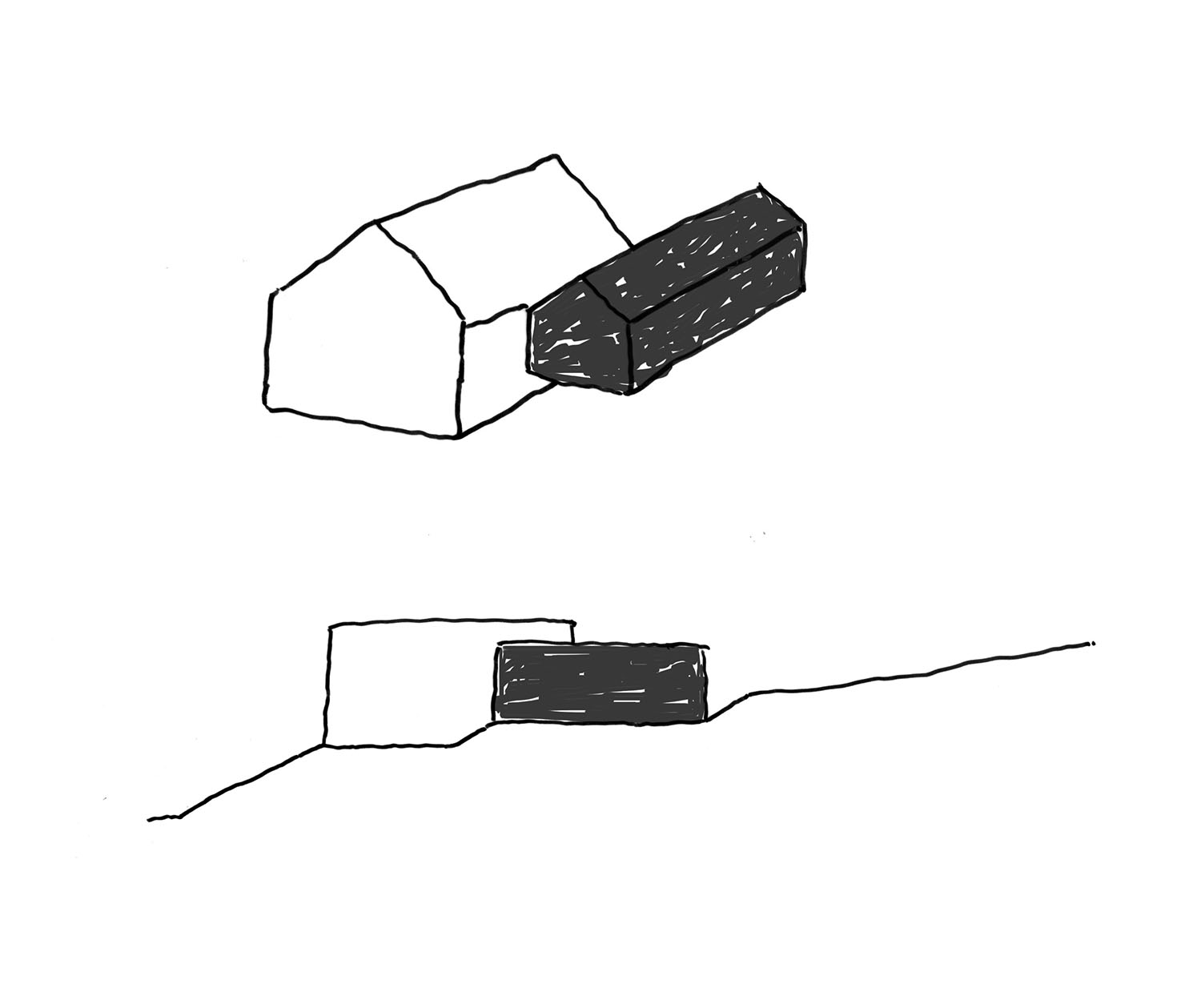Hillcroft House | Twyford, Winchester, Hampshire
New Build One-Off House in the South Downs National Park
Status: Under Construction
Client: Private
Type: Residential
Hillcroft is a project for a replacement dwelling at the edge of the settlement boundary of the village of Twyford, near Winchester in Hampshire. The site is located on a slopped patch of land rising from front to back. Expansive and open views are available looking over the fields to the Northeast, down to Twyford Waterworks. Similar landscape views are available to the front of the site over to houses situated at the top of opposing hills and fields.
The existing building on site is a small detached converted bungalow. The state of the property is of poor condition and uninhabitable. The clients wish to transform the site into their new home by building a replacement new build family house more suited to the surrounding context and maximising the potential of the site. As the site is the end or last house along a run of residential properties, constructing a replacement dwelling provides the opportunity to design a building better suited to the site conditions and proportions, and making the most of the available views. As well as this, the new building will improve upon sustainable and energy efficient requirements.
The applicant wishes for the interior design and layout of the property to draw influence from Scandinavian architecture and the concept of the ‘allrum’ - of living spaces that feel semi open-plan in nature and flow from one to the next. The external appearance of the proposal is influenced by the rural environment and wider rural Hampshire context. There is a focus on local and natural materials articulated in a contemporary form.
The concept originates with the typical pitched roof form of a traditional house. This shape is located such that the gable-end (smaller side) faces the street to reduce visual mass. Dissecting the house into two forms (primary and secondary) further reduces visual mass.
These two elements are elongated - relating to barn vernacular. The smaller form is then slipped backwards to establish a hierarchy between the two elements - one main larger element and a set back smaller, secondary subservient element. This draws on similarities between the rural notion of a main building and an outbuilding. A different articulation in the timber cladding across the elements further distinguishes the two forms and reduce visual mass.
The design needs to take into account and make the most of the existing changes in level, in order that the design develops a strong relationship to the site. In plan, the proposal is suited to the long linear nature of the site. The slipped form creates a front entrance courtyard and rear living courtyard. The two forms can be stepped according to the naturally sloping site, responding directly to the site constraints and context.
The layout is arranged according to the passage of arriving at the site and using the house. From parking, to entering the house, using the communal spaces and proceeding to the bedroom spaces located towards the rear of the scheme. The entrance to the house is in the larger of the two elements and contains the main living spaces. The smaller element consists of the more private spaces, such as the bedrooms. The new design takes advantage of the surrounding views to the Waterworks, the fields opposite and the immediate rear garden.
For more examples of our contemporary architecture designs please view our selected projects here, or if you would like to discuss a project please view our contact page here.

